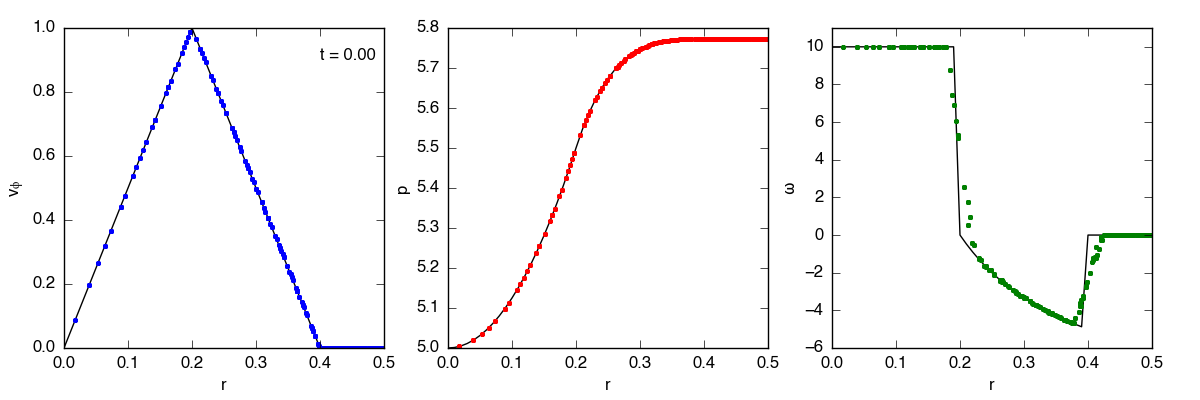Gresho Test
December 19, 2016
The Gresho vortex test is a notoriously difficult problem for grid-based (and SPH) codes. A rotating vortex is initialized such that the centrifugal force is balanced by the pressure gradient. The solution is time-independent. For these tests, I used the initial conditions described in Liska & Wendroff (2003).

Definitions
The velocity in the gresho problem is specified in polar coordinates, which I convert to Cartesian to initialize the voretx. Given
I get
(where \(v_{\phi} = r \frac{d(\phi)}{dt}\)). Since \(v_{r} = 0\) for the Gresho problem, that gives
\(\phi\) is calculated from \(x\) and \(y\) using \(\phi= \mathrm{arctan}(\frac{y}{x})\) and \(r\) using \(r^2 = x^2 + y^2\).
In plotting the data, the conversion goes the other direction, from \(v_{x}, v_{y}\) to \(v_{\phi}\). After a similar derivative analysis, I get
How about the vorticity? Vorticity is the curl of the velocity field, so in 2D it’s
or in polar coordinates
Results
I’m running the test until t = 3.0 on a 40x40 grid with transmissive boundaries, PPMC, the exact solver, and CTU. The domain is x = [0, 1], y = [0, 1], with the vortex centered at (x, y) = (0.5, 0.5). The movies below show the evolution in azimuthal velocity (\(v_\phi\)), pressure, and vorticity (\(\omega\)). For \(v_\phi\) and \(p\), both 1D and 2D projections are shown.
L1 error
The L1 error is a useful measurement of how well the code is doing, as well as the convergence rate for this test. I calculate the L1 error for vorticity and density using the standard definition
where \(\mathbf{q}_i^0\) is the initial solution, and \(N\) is the total number of points. The L1 errors for density and vorticity are 0.14% and 135% on a \(20\times20\) grid, and 0.04% and 80% on a \(40\times40\) grid.